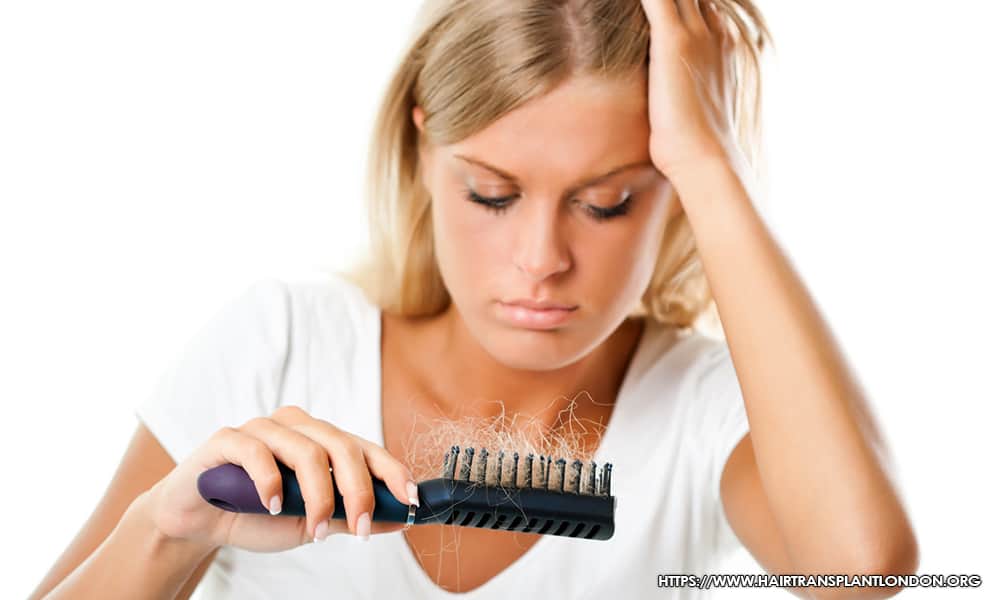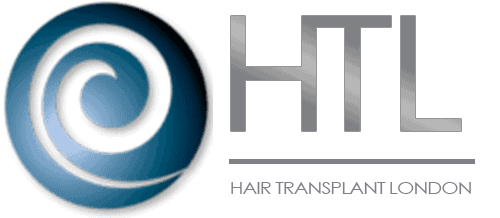Hair Loss Information for Women
 It is common for women to lose around 100 hairs a day, but extreme hair loss, particularly in women, may be a sign of an underlying problem in the body. Woman Type Baldness, Telogen Effluvium, Anagen Effluvium, Alopecia Areata and Traction Alopecia are the most common forms of hair loss in women which are the result of multiple underlying problems. People ought to learn what causes hair to fall out in order to address the problem of hair loss.
It is common for women to lose around 100 hairs a day, but extreme hair loss, particularly in women, may be a sign of an underlying problem in the body. Woman Type Baldness, Telogen Effluvium, Anagen Effluvium, Alopecia Areata and Traction Alopecia are the most common forms of hair loss in women which are the result of multiple underlying problems. People ought to learn what causes hair to fall out in order to address the problem of hair loss.
- Female Pattern Baldness or androgenetic alopecia is a symptom of the male hormone testosterone due to the activity of various hormones and, in particular, dihydrotestosterone (DHT). Normally, women do not have a hormone that is high enough to induce hair loss, but menopause and occasionally heredity by either parent can lead to thinning of the hair on the scalp and bald spots. Hormonal changes often affect the same form of hair loss following birth and after other forms of ovarian cysts arise.
- Telogen Effluvium is also associated with hormones and, in particular, with DHT. It’s a short-term response to a traumatic occurrence for the female body. It may be over-dieting, breastfeeding, or extreme pain. Hair loss happens six weeks to three months after the incident. Normally, even if not covered, the hair grows again.
- Anagen Effluvium is a hair deficiency due to chemotherapy. Chemotherapy attacks quickly dividing cells in the body to destroy cancer cells. Since the hair is of the same consistency, often it is also affected.
- Alopecia Areata is an autoimmune disease that affects hair follicles in the scalp region. It is generally a genetic disorder, too.
- Traction Alopecia is a disease caused by a hair loss with rigid hairstyles, extensions and beauty products.
Click Here to receive up to £2000 off Your Hair Transplant Procedure
Hair Loss Treatments for Women
Since hair loss often has to do with hair mistreatment, women with thinning hair prefer to ignore the issue. That’s the best thing to do in certain situations. However, if the condition lasts for longer than a few months, it is advised that you get a doctor’s advice about what causes it and how to handle it.
There are a number of hair loss therapies for women on the market, ranging from shampoos to hair transplantation. The medication type of option depends on the type of hair loss suffered, the quality of therapy available, the efficacy of the medication and the budget.
The drug that is typically recommended for most women is 2 percent Minoxidil. Treatment requires the application of the drug to balding areas. The outcomes are not lasting and cease at the end of therapy. Common side-effects may include: burning or inflammation of the eye, scratching, redness or discomfort of the treatment area, as well as excessive hair growth elsewhere in the body.
When hair loss is the product of malnutrition, clinicians may recommend taking iron supplements, and spironolactone or oral contraceptives are recommended where there is a hormonal imbalance.
In situations where hair loss is permanent or a permanent solution to the hair loss issue is needed, hair transplants from healthy areas of the scalp can be used to treat hair loss in women.
Changing your beauty regimen will only help your beauty if the previous one is to blame for your hair loss. In that case, it has been found that anti-dandruff shampoos containing ketoconazole can slow it down.
To conclude, when faced with severe hair loss, ask your doctor for advice and carefully chose your course of action. If your preferred remedy is ineffective, contact the doctor again because hair loss may be a symptom of a large amount of undiscovered issues.
